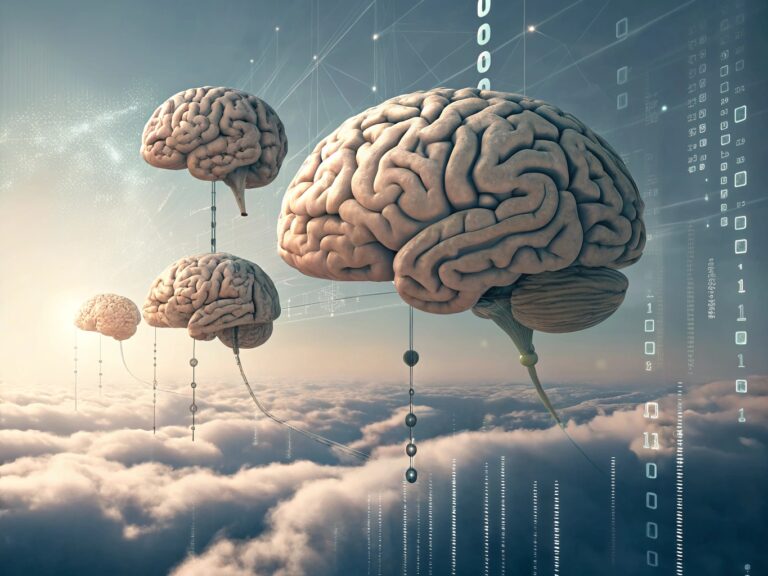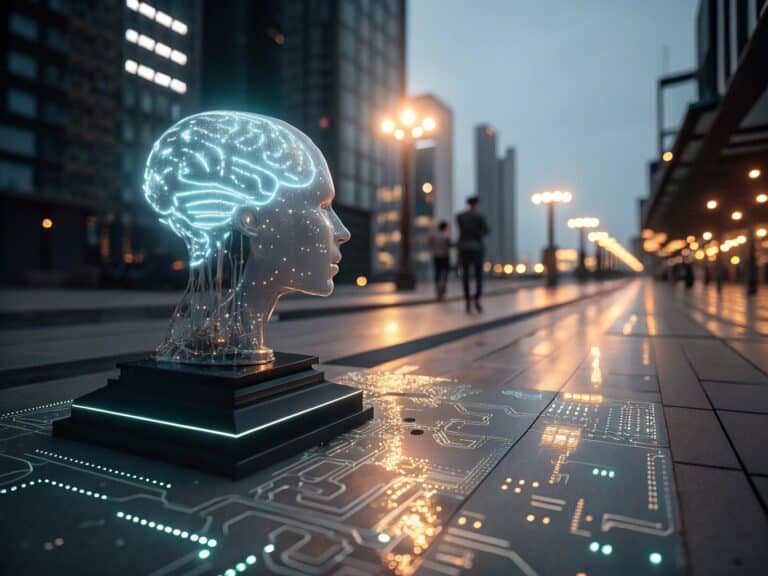Artificial intelligence has transcended simple automation to emerge as sophisticated, autonomous entities capable of independent decision-making and strategic planning. These AI agents represent the next evolutionary step in intelligent systems, promising to revolutionize how businesses operate through unprecedented efficiency, personalized experiences, and advanced decision-making capabilities.
Understanding AI agent fundamentals becomes crucial as true multiagent systems, in which work is orchestrated among a network of autonomous agents, are being developed now, with some pilots launched in late 2024. The field has reached a critical juncture where 99% of developers who are building AI applications for enterprise already say they are exploring or developing AI agents.
Core Architectural Foundations
1. Autonomy: The Foundation of Independent Action
Autonomy represents the fundamental capability enabling AI agents to operate independently without continuous human intervention. Unlike traditional software that requires explicit instructions for each task, autonomous agents demonstrate the ability to make decisions, adapt to changing circumstances, and pursue objectives through self-directed actions.
The concept of an AI agent refers to a system or program that is capable of autonomously performing tasks on behalf of a user or another system by designing its workflow and utilizing available tools. This autonomy manifests through sophisticated planning algorithms, environmental awareness, and goal-oriented behavior patterns that enable agents to function effectively in dynamic, unpredictable scenarios.
Modern implementations leverage advanced machine learning techniques to enhance autonomous decision-making. The true definition of an AI agent is an intelligent entity with reasoning and planning capabilities that can autonomously take action, distinguishing them from simple automated systems.
2. Reactivity: Environmental Responsiveness
Reactivity encompasses an agent’s capacity to perceive environmental changes through sensors or data inputs and respond appropriately in real-time. This fundamental capability enables agents to adapt their behavior based on current conditions, ensuring effective operation in dynamic environments .
Reactive systems excel in scenarios requiring immediate responses to environmental stimuli. AI agents are becoming more autonomous, capable of making decisions and taking actions without human intervention, particularly evident in applications like autonomous vehicles, robotics, and financial systems where split-second decisions can have significant consequences.
The integration of advanced sensor technologies and real-time data processing capabilities has significantly enhanced reactive capabilities. Modern agents can process multiple data streams simultaneously, enabling sophisticated environmental awareness and rapid response mechanisms.
3. Proactivity: Strategic Initiative and Foresight
Proactivity distinguishes advanced AI agents from simple reactive systems by enabling them to initiate actions strategically to achieve objectives. Rather than merely responding to environmental changes, proactive agents demonstrate foresight and strategic thinking, anticipating future scenarios and taking preventive or preparatory actions.
This capability involves sophisticated predictive modeling and scenario planning. Autonomous agents can navigate complex decision trees, interpret intricate data patterns, and collaborate effectively with humans. Proactive behavior enables agents to optimize outcomes by considering long-term consequences and potential future states.
Advanced proactive systems utilize machine learning techniques to improve their predictive capabilities over time, learning from past experiences to make better strategic decisions. This forward-thinking approach enables agents to prevent problems before they occur and optimize resource allocation for future needs.
Agent Classification Systems
4. Simple Reflex Agents: Rule-Based Response Mechanisms
Simple reflex agents operate through predefined condition-action rules, responding to specific environmental inputs with predetermined actions. Reflex agents act based on predefined rules and do not consider past experiences or future consequences. These agents excel in structured environments with well-defined parameters but struggle in complex scenarios requiring adaptive reasoning.
The architecture follows a straightforward “if-then” logic structure, making them computationally efficient and predictable. Simple reflex agents operate purely on predefined rules, enabling rapid responses in controlled environments such as thermostats, basic alarm systems, and simple automated processes.
While limited in complexity, simple reflex agents remain valuable for specific applications where deterministic behavior is preferred over adaptive intelligence. Their reliability and predictability make them suitable for safety-critical systems where unexpected behavior could pose risks.
5. Model-Based Reflex Agents: Environmental State Management
Model-based reflex agents maintain internal representations of their environment, enabling more sophisticated decision-making in partially observable scenarios. Model-based reflex agents maintain an internal state (a model of the world) to handle partially observable environments and make more informed decisions. This internal model allows agents to track changes over time and make decisions based on historical context .
These agents bridge the gap between simple reactive systems and more advanced planning-capable agents. By maintaining state information, they can handle situations where complete environmental information isn’t immediately available, making them suitable for real-world applications with incomplete or noisy data.
Model-based reflex agents maintain an internal world model to handle unpredictable environments, enabling more robust operation in dynamic conditions compared to simple reflex systems.
6. Goal-Based Agents: Objective-Driven Intelligence
Goal-based agents represent a significant advancement in AI systems, capable of strategic planning and action selection based on desired outcomes. A goal-based agent is an AI system designed to achieve a specific goal. Unlike reactive systems, these agents consider future consequences of their actions and develop comprehensive plans to achieve objectives.
The planning capability distinguishes goal-based agents from simpler systems. Goal-based agents provide structured decision-making 7, enabling them to navigate complex scenarios by evaluating potential action sequences and selecting optimal paths toward their objectives.
Goal-based AI agents are designed to achieve specific goals with artificial intelligence, capable of considering the future consequences of their actions 9. This forward-thinking capability makes them particularly valuable for strategic applications in business planning, resource management, and complex problem-solving scenarios.
7. Utility-Based Agents: Optimization and Trade-off Management
Utility-based agents advance beyond simple goal achievement by incorporating preference functions that evaluate and compare different outcomes. A utility-based agent is an AI system designed to maximize a specific utility. These agents excel in scenarios involving multiple objectives and competing priorities .
The utility function serves as a mathematical representation of preferences, enabling agents to make nuanced decisions when multiple goals or constraints exist. Utility-based reflex agents are effective in dynamic and complex environments, where simple binary goal-based decisions might not be sufficient.
Utility-based agents excel in complex decision-making environments with multiple potential outcomes, balancing different risks in order to make investment decisions. This capability makes them particularly valuable for financial applications, resource optimization, and multi-criteria decision-making scenarios.
8. Learning Agents: Adaptive Intelligence Systems
Learning agents possess the crucial ability to improve performance over time through experience and environmental feedback. Learning agents hold the same capabilities as the other agent types but are unique in their ability to learn. This adaptive capability enables continuous improvement and adaptation to changing conditions.
The learning architecture typically incorporates four essential components: performance elements for decision-making, learning elements for improvement, knowledge bases for information storage, and feedback mechanisms for performance evaluation. Learning agents stand out as the most dynamic, capable of adapting and improving over time.
Modern learning agents leverage advanced machine learning techniques, including reinforcement learning, neural networks, and deep learning architectures. These systems can adapt to new environments, learn from mistakes, and optimize their performance based on accumulated experience, making them invaluable for dynamic, evolving applications.
Advanced Collaborative Systems
9. Multi-Agent Systems: Distributed Intelligence Networks
Multi-Agent Systems (MAS) represent sophisticated networks where multiple AI agents interact, collaborate, or compete within shared environments. Multiagent models often outperform single-model systems by distributing tasks, especially in complex environments. These systems enable collective problem-solving capabilities that exceed individual agent capacities.
Multi-agent LLMs are language models teamed up to work and solve complex tasks, each agent taking a unique role that it’s good at. The collaborative approach allows for task specialization, parallel processing, and distributed decision-making, resulting in more robust and efficient solutions.
LLM-based Multi-Agent System refers to a computational system comprising multiple intelligent agents powered by large language models that can perceive, learn, reason, and act collaboratively to solve complex tasks collectively at scale. This distributed approach enables scalable solutions for complex real-world problems.
10. Agentic AI: Goal-Driven Autonomous Systems
Agentic AI represents a paradigm shift toward goal-driven, autonomous systems that transcend traditional rule-based automation. Agentic AI is driving this change by equipping machines with advanced cognitive abilities, allowing them to understand complex situations and devise intelligent solutions. These systems demonstrate sophisticated reasoning, planning, and adaptation capabilities.
The agentic approach emphasizes autonomous decision-making and strategic behavior. Agentic AI represents the application of LLMs as autonomous agents capable of goal-oriented behavior in dynamic environments, moving beyond simple text generation to encompass comprehensive problem-solving and action-taking capabilities.
Modern agentic systems integrate multiple cognitive functions, including perception, reasoning, memory management, and strategic planning. This holistic approach enables them to handle complex, multi-step tasks that require sustained autonomous operation over extended periods.
Cognitive Architecture Components
11. Large Language Models as Agent Cores
Large Language Models serve as the foundational reasoning engines for modern AI agents. Modern AI agents leverage advanced language models as core components, augmenting them with specialized modules for memory, planning, tool use, and environmental interaction. LLMs provide the natural language understanding and generation capabilities essential for human-agent interaction.
AI agents are powered by LLMs and can interface with tools, other models and other aspects of a system or network as needed to fulfill user goals. This integration enables agents to process complex instructions, generate human-readable responses, and interface with various external systems.
The evolution of LLMs has significantly enhanced agent capabilities, with models like GPT-4, Claude, and Gemini providing increasingly sophisticated foundations for agent development. These models enable more natural interaction patterns and improved reasoning capabilities across diverse domains.
12. Memory Systems: Context and Learning Architecture
Memory systems form the backbone of persistent agent intelligence, enabling context retention and learning from experience. Memory management systems maintain information across multiple interactions and timescales, enabling agents to learn from experience and maintain context. Advanced memory architectures distinguish between working, episodic, semantic, and procedural memory types.
A-Mem (Agentic Memory) provides dynamic memory structuring through atomic notes with rich contextual descriptions, enabling more effective capture and utilization of information relationships. These sophisticated memory systems enable agents to maintain coherent long-term interactions and continuously improve their performance.
Memory in LLMs can be categorized under short-term memory and long-term memory, with commercial LLMs processing large contexts of over 100K tokens. Despite these advances, effective memory management remains crucial for maintaining agent performance and consistency across extended interactions.
13. Reflection and Self-Monitoring Capabilities
Reflection mechanisms enable agents to evaluate their own performance and adapt their behavior based on outcomes. Self-monitoring and metacognitive components enable agents to evaluate their own performance, recognize limitations, and adjust their approach accordingly. This self-awareness capability is essential for continuous improvement and error correction.
Through the ReAct paradigm, agents can be instructed to “think” and plan after each action taken and with each tool response to decide which tool to use next. These Think-Act-Observe loops enable iterative problem-solving and continuous refinement of approaches.
Advanced reflection systems incorporate feedback mechanisms that allow agents to learn from mistakes, optimize strategies, and improve decision-making over time. This metacognitive capability distinguishes sophisticated agents from simpler automated systems.
14. Chain of Thought: Structured Reasoning Processes
Chain of Thought (CoT) reasoning enables agents to break down complex problems into manageable steps, improving accuracy and transparency in decision-making. Chain-of-Thought involves “a series of intermediate reasoning steps” that substantially improve LLM performance at reasoning tasks including maths and commonsense puzzles.
Agents take a similar approach utilizing methods such as Chain of Thought (CoT) and more recently Chain of Code (CoC), enabling more systematic problem-solving approaches. This structured reasoning approach helps agents avoid errors and provides transparency into their decision-making processes.
Chain of Thought (CoT) enables sequential reasoning steps, while Tree of Thoughts (ToT) allows multi-path reasoning exploration. These advanced reasoning structures enable more sophisticated problem-solving capabilities and improved reliability in complex scenarios.
15. Human-in-the-Loop: Collaborative Intelligence
Human-in-the-Loop (HITL) systems represent a critical concept where human oversight and intervention are integrated into AI agent workflows. Human-in-the-loop involves humans acting as teachers to AI models, instructing them on how to interpret data, make decisions, and respond appropriately in real-world applications. This approach ensures control, ethical considerations, and optimal performance.
Even with state-of-the-art agentic reasoning and prompt routing, LLMs are not sufficiently reliable to be given access to high-stakes functions without human oversight. HITL mechanisms provide essential safeguards for autonomous systems operating in critical environments.
In this agentic future, self-governing AI systems will take on many tasks currently managed by humans, including data creation, model training, and retraining, but this doesn’t eliminate the need for human oversight. The integration of human expertise with AI capabilities creates more robust and trustworthy systems.
Transformative Business Applications
The practical applications of these AI agent concepts span across industries, offering unprecedented opportunities for automation, optimization, and innovation. Applications range from streamlining supply chains to enhancing customer experiences, demonstrating the versatility and potential of agentic systems.
In manufacturing, multi-agent systems coordinate production lines, optimize resource allocation, and predict maintenance needs. Financial services leverage utility-based agents for risk assessment, portfolio optimization, and fraud detection. Healthcare applications utilize goal-based agents for treatment planning, diagnostic assistance, and patient monitoring.
In software development, where goals and validation are clear, agents can autonomously complete 30.4% of complex tasks, indicating significant potential for productivity improvements across knowledge work domains.
Strategic Implications and Future Directions
The convergence of these AI agent concepts represents a fundamental shift in how intelligent systems operate and interact with human users. AgentAI enhances scalability, robustness, and flexibility by utilizing advanced communication, learning, and decision-making capabilities, making it integral to diverse applications in Industry 4.0.
Organizations must develop comprehensive strategies for integrating these advanced AI capabilities while maintaining appropriate human oversight and control. The balance between automation and human judgment becomes increasingly important as agents become more capable and autonomous.
Understanding these foundational concepts provides the framework for navigating the rapidly evolving market of AI agents. As these systems continue to advance, their impact on business operations, decision-making processes, and human-computer interaction will only intensify, making mastery of these concepts essential for future success.
If you are interested in this topic, we suggest you check our articles:
- AI Agents Blur Business Boundaries
- Manus AI Agent: What is a General AI Agent?
- User Experience vs Agentic Experience: Designing for Delegation and Intent Alignment
- CustomGPT.ai: Genius Tool for Creating Custom AI Agents
Sources: Deloitte, IBM, arXiv, AutoGPT.net, SmythOS, brimlabs.ai, IBM (2), baeldung.com, SuperAnnotate, RossDawson.com, ScienceDirect
Written by Alius Noreika



